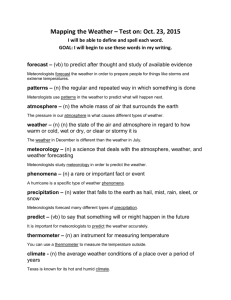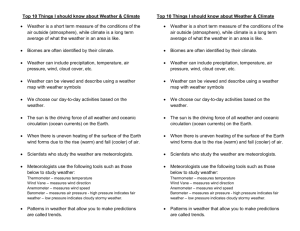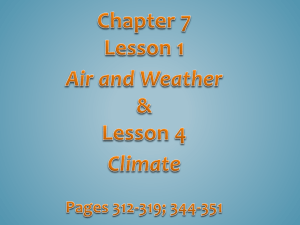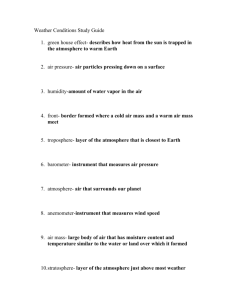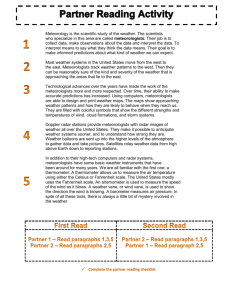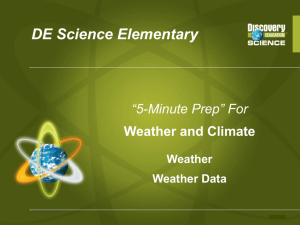Predicting the Weather By Phyllis Naegeli 1 Swirling winds, fluffy
advertisement
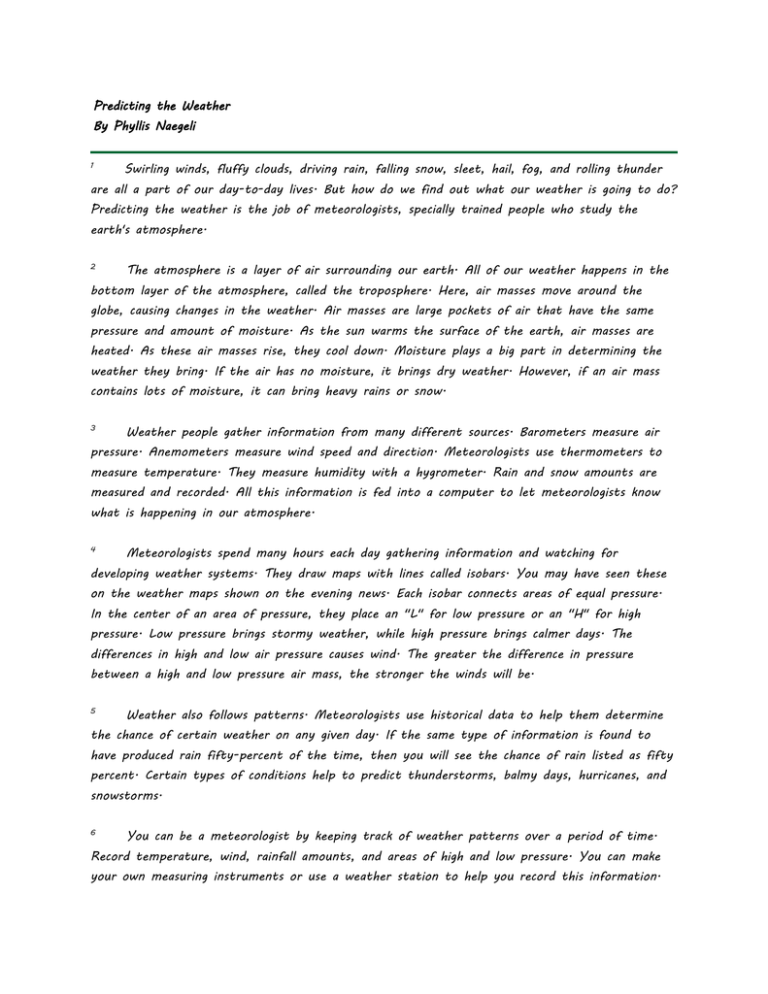
Predicting the Weather By Phyllis Naegeli 1 Swirling winds, fluffy clouds, driving rain, falling snow, sleet, hail, fog, and rolling thunder are all a part of our day-to-day lives. But how do we find out what our weather is going to do? Predicting the weather is the job of meteorologists, specially trained people who study the earth's atmosphere. 2 The atmosphere is a layer of air surrounding our earth. All of our weather happens in the bottom layer of the atmosphere, called the troposphere. Here, air masses move around the globe, causing changes in the weather. Air masses are large pockets of air that have the same pressure and amount of moisture. As the sun warms the surface of the earth, air masses are heated. As these air masses rise, they cool down. Moisture plays a big part in determining the weather they bring. If the air has no moisture, it brings dry weather. However, if an air mass contains lots of moisture, it can bring heavy rains or snow. 3 Weather people gather information from many different sources. Barometers measure air pressure. Anemometers measure wind speed and direction. Meteorologists use thermometers to measure temperature. They measure humidity with a hygrometer. Rain and snow amounts are measured and recorded. All this information is fed into a computer to let meteorologists know what is happening in our atmosphere. 4 Meteorologists spend many hours each day gathering information and watching for developing weather systems. They draw maps with lines called isobars. You may have seen these on the weather maps shown on the evening news. Each isobar connects areas of equal pressure. In the center of an area of pressure, they place an "L" for low pressure or an "H" for high pressure. Low pressure brings stormy weather, while high pressure brings calmer days. The differences in high and low air pressure causes wind. The greater the difference in pressure between a high and low pressure air mass, the stronger the winds will be. 5 Weather also follows patterns. Meteorologists use historical data to help them determine the chance of certain weather on any given day. If the same type of information is found to have produced rain fifty-percent of the time, then you will see the chance of rain listed as fifty percent. Certain types of conditions help to predict thunderstorms, balmy days, hurricanes, and snowstorms. 6 You can be a meteorologist by keeping track of weather patterns over a period of time. Record temperature, wind, rainfall amounts, and areas of high and low pressure. You can make your own measuring instruments or use a weather station to help you record this information. Put together a form to keep track of the information you gather. Before long, you'll be able to write your own weather forecast. Name _____________________________ Date ___________________ Predicting the Weather 1. A large pocket of air that has the same 2. Which instrument measures air pressure: pressure and amount of moisture is called Rain gauge a(n)_____________________. Anemometer Barometer Weather vane 3. What is an isobar? 4. Weather never follows patterns. False True 5. High pressure brings what type of 6. weather? 7. Low pressure brings which type of weather? Calmer Dull Stormy Stormy Winter Winter Freezing Balmy Name two instruments that meteorologists use to measure the weather. Bonus: Tell what information is gathered from the instruments. 8. What is the name of the layer in our atmosphere where our weather occurs?
